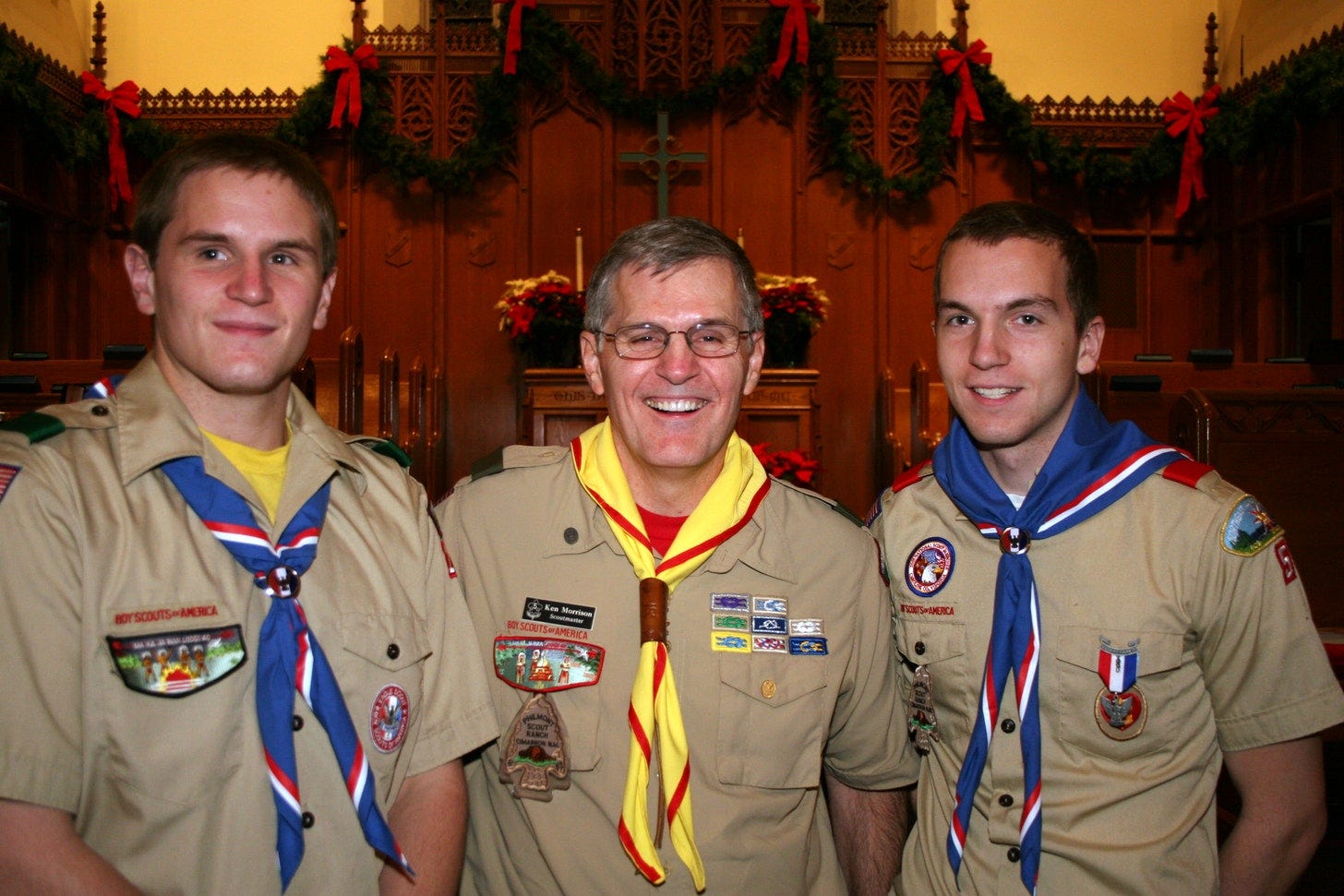Guest Essay: How councils can improve diversity, equity and inclusion
Ken Morrison, president of the Northeast Illinois Council, offers suggestions for making Scouting a more welcoming and equitable place at the local level.
As I noted in my comments in this newsletter earlier this year, my hope is that 2022 sees a substantial and sustained increase in what I think of as "local actions" to promote and improve diversity, equity and inclusion in Scouting.
There are many types of things that can be done, both by local councils and by local units, to make Scouting more diverse, more equitable and more inclusive.
A local council can demonstrate, by word and deed, that DEI is a priority in its service area. Here are some suggestions, based on actions that we have initiated (or expect to initiate) in the Northeast Illinois Council over the past two years:
Form a council-wide Diversity, Equity and Inclusion Committee. Make the chair of that committee an officer and a member of the executive board.
Charge the DEI Committee with increasing the diversity, equity and inclusiveness of the council's Scouting programs.
Redouble efforts to find and nominate candidates for the council's executive board who will increase the diversity of the board's membership. Think outside the box in terms of potential members — they don't have to be former scouts or scouters, just individuals with a genuine interest in youth development. Local councils need the perspectives that non-scouters can provide.
Make a public acknowledgement that the council has historically fallen short in its efforts to reach underserved communities and to respect marginalized individuals, apologize for the harm caused and pledge to do better.
Have a council presence at community events, such as Pride Month marches and community fairs, that promote diversity, equity and inclusion.
Develop or strengthen outreach efforts and the formation and support of units in underserved communities.
Develop a form of gender support plan for transitioning or questioning youth that will enable the creation of a shared understanding about the ways in which the youth’s authentic gender will be accounted for and supported at unit meetings, campouts, summer camp and other programming.
Look at your council’s summer camp operations to assess whether it is welcoming and inclusive of campers with differing identities. There are many elements to evaluate, such as:
How has the camp adjusted to the full inclusion of girls in BSA programs? It was painful to hear a female adult leader characterize our summer camp as “a Boy Scout camp that allows girls, but doesn’t welcome them,” but it was also a needed wake-up call. As a first step to make female campers feel more comfortable, we are going to be installing “indicator locks” (showing “vacant” or “occupied”) on single-occupant shower stalls, outfitting those stalls with benches, shelves and covered waste bins, and stocking the trading posts with feminine hygiene products.
What efforts are made to promote a welcoming and inclusive environment for those who are LGBTQ+, part of a non-dominant racial or ethnic group, or disabled? Staff training, safety moments, designs or retrofits that make buildings, paths and other structures (e.g., fishing piers) ADA-accessible, and signage in Spanish (or another language prevalent among non-English speaking families in your community) are some of the many ways to make your camp more welcoming and inclusive.
If camp staff are given engraved name tags — as is the case at many camps — are they offered the opportunity to include their pronouns on the name tags?
A local Scouting unit can also find ways to deepen the understanding of its youth (and adult) members in matters of diversity, equity and inclusion, as well as to engage in activities toward that end. Ideas include:
Seek to develop a relationship with another unit in your district or council (a "buddy unit") that is composed of members whose predominant identities differ from the predominant identities in your unit.
Find activities (campouts, first aid challenges, meetings, social events) that your unit and your buddy unit can engage in together from time to time.
Eagle scout service projects can provide a great way for scouts from two different units to work together. The eagle candidate can invite scouts and adults from the other unit to participate in the candidate’s project. And perhaps adults from more affluent units can help fund eagle project expenses for eagle candidates from units with fewer means of raising needed funds, which could put more types of service projects within reach.
The scoutmaster can deliver scoutmaster minutes that promote DEI themes.
Adult leaders can find innumerable resources online and in libraries that offer the opportunity to become more attuned to DEI concerns and to be better able to create a culture that values DEI principles.
Scouters enrolled in Wood Badge can kickstart DEI efforts in their units (or councils) while working their “tickets,” as each ticket must have at least one goal that addresses increasing diversity within the BSA — and there is no restriction on having two or more such goals.
Scouts and scouters who are willing to show their support for inclusive Scouting, and their status as someone who is safe for a marginalized youth to approach, can acquire and wear on their uniforms the Inclusive Scouting Award, which is an unofficial award created in 2002 and adopted by Scouts for Equality. (The Amazon order page is a bit discouraging, but Zach Wahls, a co-founder of SFE whose company makes the knot, assured me that more knots will be available shortly.)
I hope that these ideas are helpful. I have no doubt that there are more ways for councils and units to move forward on DEI matters, and I would welcome further suggestions.





